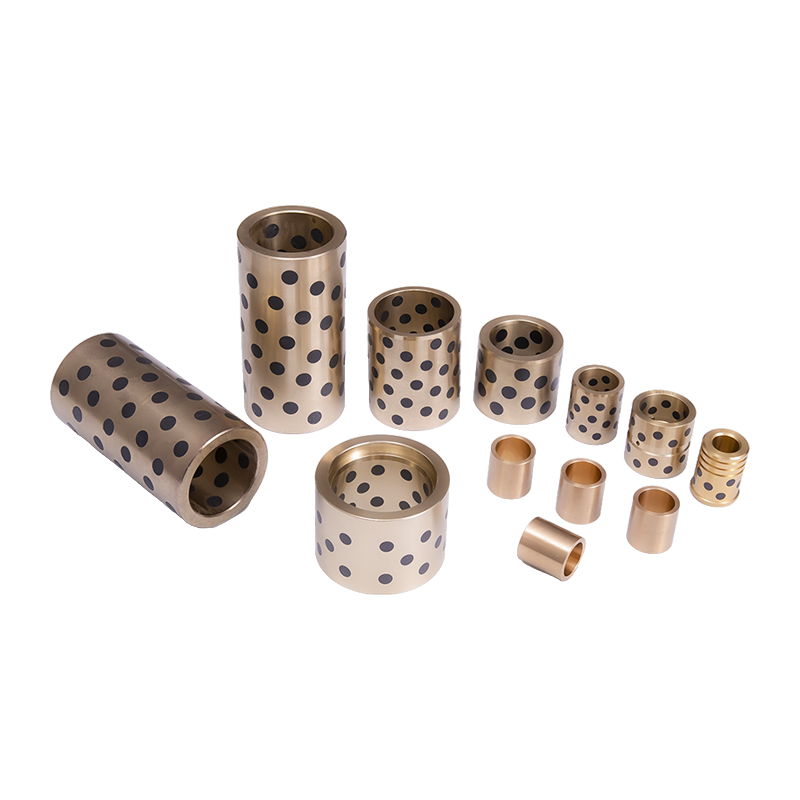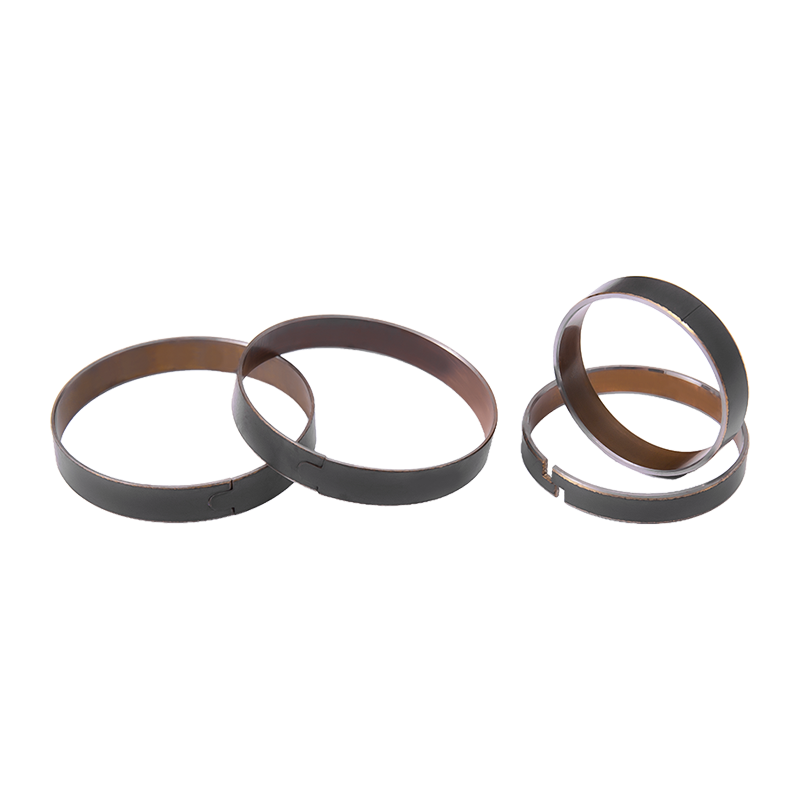Bearings play a crucial role in mechanical systems by enabling smooth and efficient movement between moving parts. They are integral components in various applications, ranging from automotive engines to aerospace machinery, where they minimize friction and wear, thereby improving the overall performance and lifespan of the system. Bearings help reduce the friction between moving parts, supporting rotational and linear motions, and can bear different types of loads, including radial and axial forces.
Among the various types of bearings, two key categories often come up in discussions: self-lubricating bearings and boundary lubricated bearings. Each type is designed with unique features to address specific requirements, such as reducing friction, minimizing wear, and performing well under challenging conditions.
Self-lubricating bearings are engineered to function without the need for external lubrication. They use internal lubricants embedded within the bearing material, making them ideal for applications where continuous lubrication is difficult or impractical. On the other hand, boundary lubricated bearings rely on an external lubricant to form a thin film between the bearing surfaces, reducing friction and wear.
The main differences between self-lubricating and boundary lubricated bearings lie in their lubrication method, load capacity, maintenance needs, and ideal operating conditions. Understanding these differences is essential for selecting the right bearing type based on specific application requirements.
Understanding Self-Lubricating Bearings
Definition and Working Principle
Self-lubricating bearings are a type of bearing that operates without requiring any external lubrication. Instead of relying on an external oil or grease supply, these bearings use an embedded lubricant within the bearing material itself. The lubricant is typically released gradually over time, creating a thin, continuous lubrication film that reduces friction between the bearing surfaces.
The materials used in self-lubricating bearings are designed to retain the lubricant and ensure efficient functioning even in the absence of external grease or oil. Common materials include PTFE (Polytetrafluoroethylene), sintered bronze, and graphite, which have self-lubricating properties that prevent wear and ensure smooth motion. These materials also have excellent resistance to heat and corrosion, making them suitable for harsh environments.
Advantages
1.Maintenance-Free Operation: One of the most significant benefits of self-lubricating bearings is that they require little to no maintenance. Since they do not need external lubrication, they reduce the need for regular lubrication checks and servicing. This feature is especially valuable in applications where maintenance is difficult or time-consuming.
2.Suitability for Hard-to-Reach Areas: In many mechanical systems, especially in complex or enclosed machinery, external lubrication can be difficult or impossible to apply. Self-lubricating bearings are ideal for these situations because they function without the need for external oiling systems.
3.Reduced Friction and Wear: The self-lubricating properties of the materials used in these bearings significantly reduce friction and wear, allowing for smoother operation and longer lifespan of the bearing and the system as a whole.
4.Ability to Operate in Harsh Environments: Self-lubricating bearings can withstand extreme operating conditions, such as high temperatures, corrosive environments, and high-load applications. The embedded lubricants ensure that the bearing continues to perform effectively under such conditions, making them an excellent choice for challenging environments.
Disadvantages
1.Lower Load Capacity: Compared to other bearing types, self-lubricating bearings typically have a lower load-bearing capacity. This means they may not be suitable for heavy-duty applications where high loads are involved.
2.Speed Limitations: Self-lubricating bearings often have speed limitations due to the nature of their lubrication system. While they can handle moderate speeds, they may not perform as well at very high speeds compared to boundary lubricated bearings.
3.Higher Initial Cost: The materials and engineering involved in creating self-lubricating bearings can result in a higher initial cost. However, the reduced need for maintenance and lubrication over time can offset this initial expense.
Common Applications
Self-lubricating bearings are widely used in industries where continuous lubrication is difficult or undesirable, as well as in applications where reliability and low maintenance are essential. Some of the most common applications include:
Aerospace: Used in aircraft and spacecraft components, where the ability to function without external lubrication is critical.
Automotive: Found in various automotive parts such as seat adjusters, window mechanisms, and engine components.
Food Processing Equipment: Utilized in food machinery, where contamination from external lubricants could be an issue.
Textile Machinery: Often used in textile machines where precision and minimal downtime are key factors.

Understanding Boundary Lubricated Bearings
Definition and Working Principle
Boundary lubricated bearings operate on a different principle than self-lubricating bearings. Instead of relying on an internal lubricant, boundary lubricated bearings require an external lubrication system, such as oil or grease, to reduce friction and wear. The lubricant forms a thin film between the bearing surfaces, allowing them to slide smoothly against each other.
In a boundary lubrication scenario, the lubricant film is often not thick enough to fully separate the bearing surfaces, meaning that the contact between the surfaces occurs at a microscopic level. As a result, this type of lubrication is typically used under conditions where full hydrodynamic lubrication (which involves a thicker lubricant film) is not feasible, such as in high-load or low-speed applications. The presence of lubricant additives further enhances the lubrication process, providing additional protection against wear, oxidation, and corrosion.
Advantages
1.High Load Capacity: Boundary lubricated bearings are designed to handle higher loads compared to self-lubricating bearings. The external lubrication system allows for a more consistent and reliable film of lubricant between the bearing surfaces, enabling the bearing to carry heavier loads without excessive wear or failure.
2.Suitable for High-Speed Applications: These bearings are well-suited for high-speed operations. As long as the lubrication is maintained and the system is properly serviced, boundary lubricated bearings can operate effectively at higher speeds than self-lubricating bearings, making them ideal for applications like electric motors and gearboxes.
3.Lower Cost: Generally, boundary lubricated bearings are less expensive than self-lubricating bearings, especially for high-load and high-speed applications. The cost savings come from the use of simpler materials and the reliance on external lubrication, which can be more easily sourced and maintained.
Disadvantages
1.Requires Regular Maintenance and Lubrication: One of the main drawbacks of boundary lubricated bearings is the need for ongoing maintenance. External lubrication must be regularly checked, replenished, and replaced to ensure the bearing continues to function effectively. This can add to the overall operational costs and downtime.
2.Higher Friction and Wear: While boundary lubricated bearings are effective, they tend to have higher friction compared to self-lubricating bearings, as the lubrication film may not always be thick enough to fully separate the bearing surfaces. This can result in more wear over time, especially under extreme operating conditions.
3.Susceptible to Contamination: The external lubrication in boundary lubricated bearings makes them more susceptible to contamination. Dust, dirt, or debris in the lubricant can compromise the performance of the bearing, leading to increased friction, wear, and possible failure if not properly managed.
Common Applications
Boundary lubricated bearings are often used in applications where high loads and speeds are required, and where regular maintenance of the lubrication system is manageable. Some of the most common applications include:
Engines: Found in internal combustion engines, where high-speed operation and the need for regular lubrication are crucial for performance and longevity.
Gearboxes: Used in mechanical gear systems where smooth motion at varying speeds and loads is essential.
Heavy Machinery: Found in heavy-duty machinery such as mining equipment, construction machinery, and industrial presses, where high loads and demanding conditions prevail.
Key Differences Between Self-Lubricating and Boundary Lubricated Bearings
Lubrication Method
Self-Lubricating Bearings: These bearings use an internal lubricant embedded within the bearing material. The lubricant is gradually released over time, reducing friction and wear without requiring external lubrication systems. This makes them maintenance-free or low-maintenance, as they don’t need regular refilling of oil or grease.
Boundary Lubricated Bearings: In contrast, boundary lubricated bearings rely on an external lubricant, such as oil or grease, to create a thin film between the bearing surfaces. The lubricant must be regularly replenished and maintained to ensure the bearing operates effectively.
Load Capacity
Self-Lubricating Bearings: Generally, these bearings have a lower load-bearing capacity compared to boundary lubricated bearings. The material and lubrication system in self-lubricating bearings are optimized for lighter to moderate loads and for applications where space constraints or maintenance-free operation is a priority.
Boundary Lubricated Bearings: These bearings can handle significantly higher loads. The external lubrication system helps create a thicker lubricant film, allowing the bearing to carry heavier loads without the risk of overheating or excessive wear.
Maintenance Requirements
Self-Lubricating Bearings: These bearings require minimal to no maintenance because the lubricant is internal and self-contained. They are ideal for applications where external lubrication is difficult or impractical, such as in harsh environments or where regular servicing is not possible.
Boundary Lubricated Bearings: Regular maintenance is essential for boundary lubricated bearings. The external lubricant must be checked and replaced periodically to ensure proper function. This can require more time and effort but offers flexibility in adjusting the lubrication based on operational conditions.
Friction and Wear
Self-Lubricating Bearings: The self-contained lubricant in these bearings significantly reduces friction and wear, offering smoother operation and a longer service life. They are designed to minimize surface contact, which results in lower friction coefficients compared to boundary lubricated bearings.
Boundary Lubricated Bearings: These bearings typically experience higher friction and wear because the lubrication film may not be thick enough to fully separate the bearing surfaces. As a result, they may require more frequent maintenance and may have a shorter lifespan under certain conditions.
Operating Conditions
Self-Lubricating Bearings: Ideal for low to moderate-speed applications in environments where external lubrication is difficult or undesirable. They excel in harsh conditions such as extreme temperatures, corrosive environments, or when the bearing is in a location that is hard to access for lubrication purposes.
Boundary Lubricated Bearings: Best suited for high-load and high-speed applications where external lubrication can be easily managed. These bearings perform well under variable load conditions but require regular attention to ensure the lubrication system is functioning properly.

Choosing the Right Bearing
Factors to Consider
When selecting the appropriate bearing for a specific application, several factors must be taken into account to ensure optimal performance, durability, and efficiency. The key factors include:
1.Load Requirements:
For applications with heavy or high-load conditions, boundary lubricated bearings are often the better choice due to their higher load capacity. Self-lubricating bearings, on the other hand, are more suitable for lighter loads.
2.Speed Requirements:
Self-lubricating bearings typically have speed limitations, and may not perform well under high-speed conditions. Boundary lubricated bearings are better suited for high-speed applications as long as the lubrication is maintained.
3.Operating Environment:
If the application operates in a harsh or hard-to-reach environment (e.g., extreme temperatures, corrosive conditions, or sealed environments), self-lubricating bearings are more advantageous since they do not require external lubrication.
4.Maintenance Capabilities:
Consider how much maintenance the application can support. Self-lubricating bearings are ideal when minimal maintenance is required, while boundary lubricated bearings demand regular servicing of the lubrication system.
5.Cost:
Budget constraints often play a role in the selection process. Self-lubricating bearings tend to be more expensive initially due to their specialized materials, but their low maintenance costs can provide long-term savings. Boundary lubricated bearings are usually less expensive upfront, but the cost of regular maintenance must be considered.
Decision Matrix
The following decision matrix summarizes the pros and cons of self-lubricating and boundary lubricated bearings for different applications:
| Factor | Self-Lubricating Bearings | Boundary Lubricated Bearings |
| Load Capacity | Lower load capacity | Higher load capacity |
| Speed | Moderate speed limitations | Suitable for high-speed applications |
| Maintenance | Low or no maintenance required | Requires regular lubrication maintenance |
| Operating Environment | Ideal for harsh or sealed environments | Suitable for controlled environments with regular lubrication |
| Cost | Higher initial cost, low long-term maintenance | Lower initial cost, higher long-term maintenance costs |
| Friction and Wear | Lower friction and wear | Higher friction and wear due to external lubrication |
This matrix helps in making an informed decision based on the operational needs of the system.
Potential Products
Self-Lubricating Bearings
1.GGB-MEGALIFE XT:
This bearing is engineered for demanding applications that require exceptional wear resistance and performance under high loads and speeds. It offers a combination of self-lubricating materials that reduce friction and extend service life, making it ideal for industries such as aerospace, automotive, and industrial machinery.
2.SKF TX Series:
The SKF TX Series consists of composite dry sliding bearings that operate maintenance-free and offer excellent resistance to corrosion. These bearings are suitable for environments where lubrication is difficult to apply or maintain, such as food processing or textile machinery, while still delivering reliable performance.
3.Saint-Gobain NORGLIDE:
These specialty bearings are designed to minimize noise and vibration in applications where quiet operation is crucial. They are widely used in automotive and industrial sectors, offering long-lasting performance in demanding environments where traditional lubrication would be inefficient.
4.Igus Iglidur:
The Iglidur series offers a wide range of plastic bearings that are known for their durability and low friction properties. These bearings are suitable for a variety of industrial applications where long-lasting performance is needed, and lubrication is difficult to apply or maintain.
5.Thomson Linear Bearings:
These bearings are designed for linear motion applications, providing smooth and precise movement. With self-lubricating features, they are ideal for industries like robotics and automation, where both high precision and low maintenance are required.
Boundary Lubricated Bearings
1.Timken Tapered Roller Bearings:
Known for their ability to handle high loads and provide durability, Timken Tapered Roller Bearings are commonly used in heavy-duty machinery and automotive applications. Their design allows for efficient handling of both radial and axial loads.
2.NSK Ball Bearings:
NSK’s precision ball bearings are engineered for high-speed operations with reduced friction. They are widely used in a range of applications, including electric motors, power tools, and automotive components, offering high performance and reliability.
3.FAG Spherical Roller Bearings:
These self-aligning bearings are designed to handle high loads and misalignment, making them ideal for applications where precise alignment is difficult to maintain. They are commonly used in mining equipment, industrial machinery, and construction vehicles.
4.INA Needle Roller Bearings:
INA’s needle roller bearings provide high load capacity in a compact design, ideal for applications where space is limited but high precision and durability are necessary. These bearings are typically used in automotive and aerospace applications.
5.NTN Cylindrical Roller Bearings:
NTN’s cylindrical roller bearings are designed for high radial loads and moderate speeds, making them perfect for use in gearboxes, electric motors, and other mechanical systems that require high load support and minimal friction.
Conclusion
Both self-lubricating and boundary lubricated bearings offer distinct advantages depending on the specific application requirements. Self-lubricating bearings provide maintenance-free operation, reduced friction, and durability in harsh environments, making them suitable for low-to-moderate load applications. However, they come with limitations in terms of load capacity, speed, and higher initial costs.
On the other hand, boundary lubricated bearings excel in high-load and high-speed applications. They are typically less expensive upfront but require regular maintenance to ensure the lubrication system functions correctly. Despite the higher friction and wear they experience, they remain essential in industries that demand high performance under heavy-duty conditions.
Choosing the right bearing involves considering factors such as load, speed, operating environment, maintenance capabilities, and cost. By evaluating these factors carefully, businesses can ensure that they select the bearing type that will deliver the best performance and longevity for their specific needs.



 English
English русский
русский Español
Español عربى
عربى


